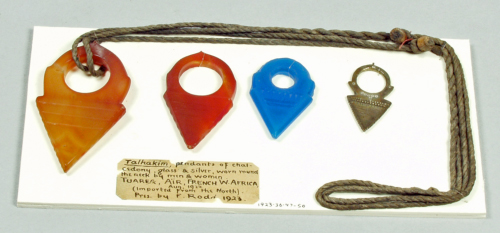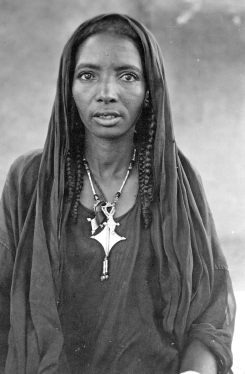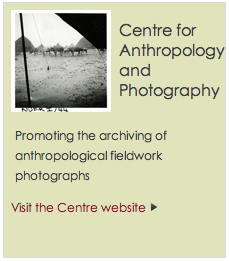Amulet Trail: Tuareg pendants, Niger
 PRM 1923.36.47-50
PRM 1923.36.47-50
These distinctive amulets are known as talhakimt. They are found across Islamic Africa, in particular among the nomadic Tuareg-Berber peoples of Niger, Mali and Algeria. They possibly derive from Indian agate finger rings or even archer's thumbrings (see one in the Pitt Rivers collection here). Whilst reddish agate and carnelian (chalcedony) remained popular materials for talhakimt, by the 19th century they were also being made of stone, silver, glass and porcelain in the factories of India, France, Germany, Austria, and Italy for trade to Africa. Today they are available in plastic too.
These examples were collected by the geographer Francis Rodd during the Buchanan Sahara expedition of 1922 which traversed 3,500 miles from Nigeria to Algeria. A little later in Sudan in the 1930s, British scholar and administrator A. J. Arkell identified two main types of Tuareg ornaments – the arrowhead-ring type talhakimt and the metal Cross of Agadez— both worn as pendants and believed to bring good luck. The cross is not directly associated with either Christianity or Islam but the four arms are believed to repel evil.

Tuareg woman wearing talhakimt and Cross of Agadez pendants.
Photo by Anthony J Arkell, 1920s. PRM 1998.204.43.2






